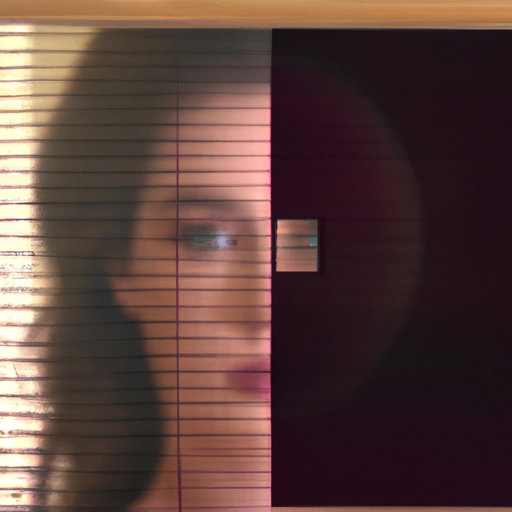-
Table of Contents
Art Deco: A Timeless Design Aesthetic
Art Deco is a design style that emerged in the 1920s and 1930s, characterized by its bold geometric shapes, luxurious materials, and sleek lines. It was a response to the ornate and elaborate Art Nouveau style that dominated the late 19th and early 20th centuries. Art Deco represented a shift towards modernity, embracing new materials and technologies while still maintaining a sense of elegance and glamour.
The Origins of Art Deco
The term “Art Deco” was coined in the 1960s, referring to the Exposition Internationale des Arts Décoratifs et Industriels Modernes held in Paris in 1925. However, the roots of the style can be traced back to the early 20th century, influenced by various art movements and cultural shifts.
One of the key influences on Art Deco was the Cubist movement, which emerged in the early 20th century and sought to depict objects from multiple viewpoints simultaneously. This fragmented and abstract approach to representation can be seen in the geometric shapes and angular forms of Art Deco design.
Another significant influence on Art Deco was the discovery of ancient Egyptian and Mayan art during archaeological excavations in the early 20th century. The clean lines, symmetry, and stylized motifs of these ancient civilizations resonated with the modernist sensibilities of the time and found their way into Art Deco design.
Characteristics of Art Deco
Art Deco design is characterized by several distinct features that set it apart from other design styles:
- Geometric Shapes: Art Deco embraces bold geometric shapes, such as triangles, circles, and rectangles. These shapes are often used in a symmetrical and repetitive manner, creating a sense of order and balance.
- Sleek Lines: Art Deco design favors clean, straight lines and smooth curves. It avoids excessive ornamentation and focuses on simplicity and elegance.
- Luxurious Materials: Art Deco celebrates luxury and opulence, often incorporating materials such as marble, gold, silver, and exotic woods. These materials add a sense of glamour and sophistication to Art Deco interiors and objects.
- Stylized Motifs: Art Deco design often features stylized motifs inspired by nature, such as sunbursts, chevrons, and zigzags. These motifs are simplified and abstracted, adding visual interest and a sense of dynamism to the design.
- Contrasting Colors: Art Deco design makes use of bold and contrasting colors, such as black and white, or vibrant combinations like red and gold. These color schemes create a striking visual impact and enhance the overall aesthetic of Art Deco interiors and objects.
Art Deco in Architecture
Art Deco had a significant impact on architecture, with many iconic buildings around the world showcasing the style. One notable example is the Chrysler Building in New York City, completed in 1930. The building’s distinctive spire, adorned with Art Deco motifs and stainless steel cladding, has become an enduring symbol of the style.
Another famous Art Deco building is the Palais de Tokyo in Paris, designed by architects Jean-Claude Dondel and André Aubert. Completed in 1937, the building features a symmetrical facade with geometric patterns and stylized motifs, exemplifying the elegance and grandeur of Art Deco architecture.
Art Deco also influenced the design of residential buildings, particularly in Miami’s South Beach neighborhood. The pastel-colored buildings with streamlined facades and decorative elements reflect the glamour and luxury associated with the Art Deco style.
Art Deco in Product Design
Art Deco had a profound influence on product design, ranging from furniture and lighting to jewelry and fashion. One notable example is the iconic “LC2” armchair designed by Le Corbusier, Pierre Jeanneret, and Charlotte Perriand in 1928. The chair’s sleek lines, chrome-plated tubular steel frame, and leather upholstery epitomize the elegance and modernity of Art Deco design.
Another influential Art Deco designer was René Lalique, known for his exquisite glasswork. Lalique’s creations, such as vases, perfume bottles, and jewelry, feature intricate patterns, stylized motifs, and a harmonious blend of glass and metal. His work exemplifies the craftsmanship and attention to detail that are hallmarks of Art Deco design.
Art Deco also left its mark on the fashion industry, with designers like Coco Chanel embracing the style. Chanel’s use of bold geometric patterns, luxurious fabrics, and statement accessories reflected the modern and independent spirit of the Art Deco era.
The Enduring Appeal of Art Deco
Despite emerging almost a century ago, Art Deco continues to captivate designers, architects, and enthusiasts around the world. Its timeless aesthetic and ability to blend modernity with elegance have ensured its enduring appeal.
Art Deco’s influence can be seen in contemporary design, with many designers incorporating Art Deco elements into their work. The clean lines, geometric shapes, and luxurious materials associated with Art Deco continue to inspire and inform modern design practices.
Furthermore, Art Deco has become synonymous with luxury and sophistication, making it a popular choice for high-end hotels, restaurants, and bars. The style’s ability to create a sense of glamour and opulence has made it a favorite among interior designers and architects seeking to evoke a sense of nostalgia and elegance.
Conclusion
Art Deco is a timeless design aesthetic that emerged in the 1920s and 1930s. Influenced by various art movements and cultural shifts, Art Deco represents a shift towards modernity while maintaining a sense of elegance and glamour. Its bold geometric shapes, sleek lines, luxurious materials, stylized motifs, and contrasting colors have made it an enduring and influential design style.
From iconic buildings to exquisite glasswork and fashion, Art Deco has left an indelible mark on various design disciplines. Its enduring appeal lies in its ability to blend modernity with elegance, creating a sense of glamour and sophistication that continues to captivate designers and enthusiasts around the world.
